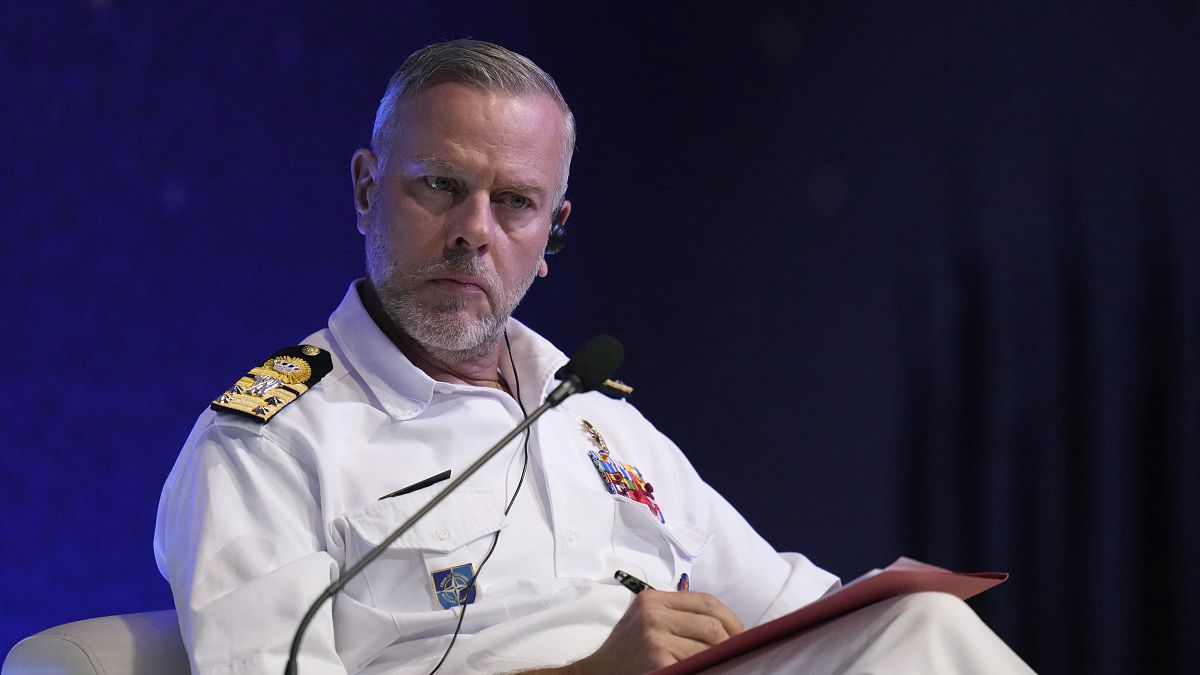Rob Bauer, the head of NATO’s military committee, stated that Ukraine has the legal and military right to strike deep inside Russia for combat advantage, although the US has yet to approve this action. While every nation attacked has the right to defend itself, Bauer emphasized that this right extends beyond national borders. However, the decision on whether to allow Ukraine to use American-provided long-range weapons to hit deep into Russia remains uncertain amid discussions between Western leaders.
Despite ongoing calls from Ukraine for Western nations to allow deeper strikes into Russia, there has been no visible shift in policy. President Joe Biden met with British Prime Minister Keir Starmer following pressure from Ukrainian officials to loosen weapons restrictions. However, no immediate decision was made regarding allowing long-range strikes into Russia using American weapons. Ukrainian President Volodymyr Zelenskyy has stressed the need to enhance air defense and long-range capabilities to protect the country’s citizens, particularly in light of increased Russian assaults.
NATO has highlighted both military and political considerations in discussions about providing additional support and training for Ukraine. Many European nations are supportive of Ukraine due to concerns about potential aggression from Russia. The military leaders gathered at the NATO meeting were urged to be bold and open in articulating recommendations to strengthen Europe’s defense against potential threats. While there is military rationale for weakening the logistical lines and sources of ammunition of an attacking enemy, the risks of escalation should also be taken into account.
Russian officials have warned that long-range strikes by Ukraine could lead to further escalation of the conflict with the West. The Kremlin has accused NATO countries of playing a role in the conflict and threatening a response to any escalation. Russian Deputy Foreign Minister Sergei Ryabkov criticized the US and UK governments for potentially pushing the conflict towards poorly controlled escalation. Despite these warnings and threats, President Biden downplayed concerns raised by Russian President Vladimir Putin, stating that he does not think much about Putin’s comments.
The debate over allowing Ukraine to strike deeper into Russia with American weapons reflects the complexities of balancing military strategies with potential risks of escalation. While there is a military advantage in targeting key enemy locations, such actions could lead to further conflict and tensions between Russia and Western nations. The decision-making process involves weighing the pros and cons of providing Ukraine with long-range capabilities while considering the broader political implications of such actions. As discussions continue among NATO leaders and Western allies, the focus remains on finding a strategic balance that enhances Ukraine’s defense capabilities without exacerbating the conflict with Russia.
In conclusion, the ongoing discussions about allowing Ukraine to strike deep inside Russia highlight the challenges of balancing military tactics with political considerations. While there is a legal and military justification for such strikes, Western leaders are hesitant to approve these actions due to concerns about potential escalation. The support for Ukraine from NATO and European nations underscores the broader strategic considerations involved in the conflict. As President Zelenskyy seeks to bolster Ukraine’s defense capabilities, the decision regarding long-range weapons strikes remains a contentious issue that requires careful deliberation among Western allies.











